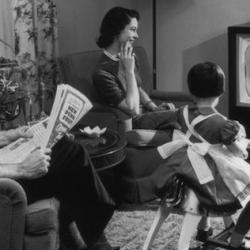Mark Poster points to a tension between the modern institutions of production and the postmodern technologies of communication, particularly as they impact the formation of the self: “If modernity or the mode of production signifies patterned practices that elicit identities as autonomous and (instrumentally) rational, postmodernity or the mode of information indicates communication practices that constitute subjects as unstable, multiple and diffuse. The information superhighway and virtual reality will extend the mode of information to still further applications, greatly amplifying its diffusion by bringing more practices and more individuals within its pattern of formation.”
Working from a post-structuralist position that the subject is constituted by social and cultural forces, Poster suggests that “Subject constitution in the second media age occurs through the mechanism of interactivity.” Forming virtual communities, he says, is the main use of the Internet, surpassing the use of the web for commerce or for research. The opposition of real/virtual communities is not, he thinks, adequate to account for the emergence of new forms of community, since the Internet questions the very notion of a real community, which depends, Jean-Luc Nancy has argued, on the fixed, stable identities of its members.
On the web, “people connect with strangers without much of the social baggage that divides and alienates. Without visual cues about gender, age, ethnicity and social status, conversations open up in directions that otherwise might be avoided. Participants in these virutal communities often express themselves with little inhibition and dialogues flourish and develop quickly.” These communities derive their communal sense, thought, from being treated as old-fashioned face-to-face communities and conversations. And Poster argues that “real” communities depend on an imaginative element that attributes importance to the communications exchanged among its members. Hence, real and virtual communities “mirror each other in chiasmic juxtaposition.”














